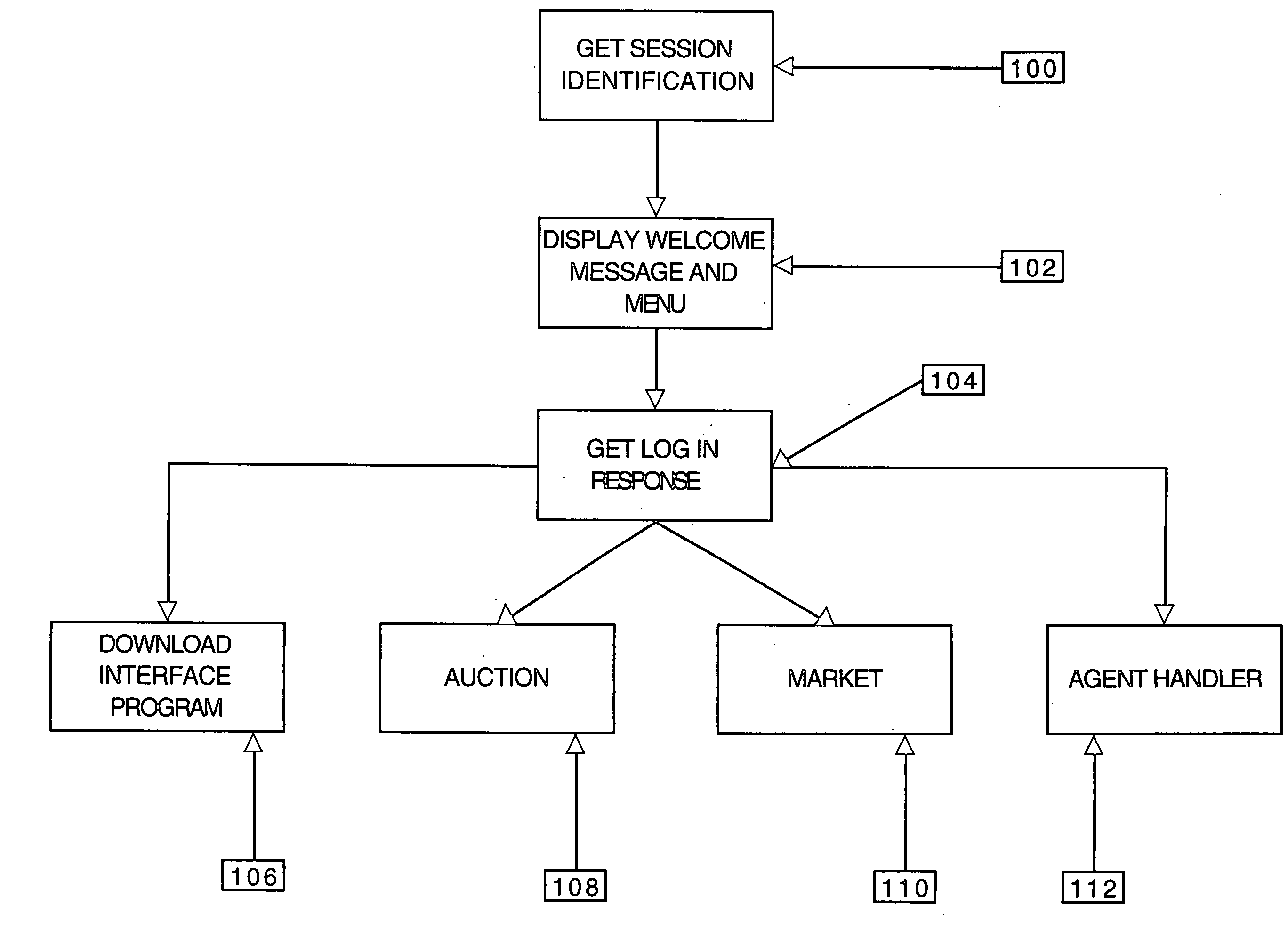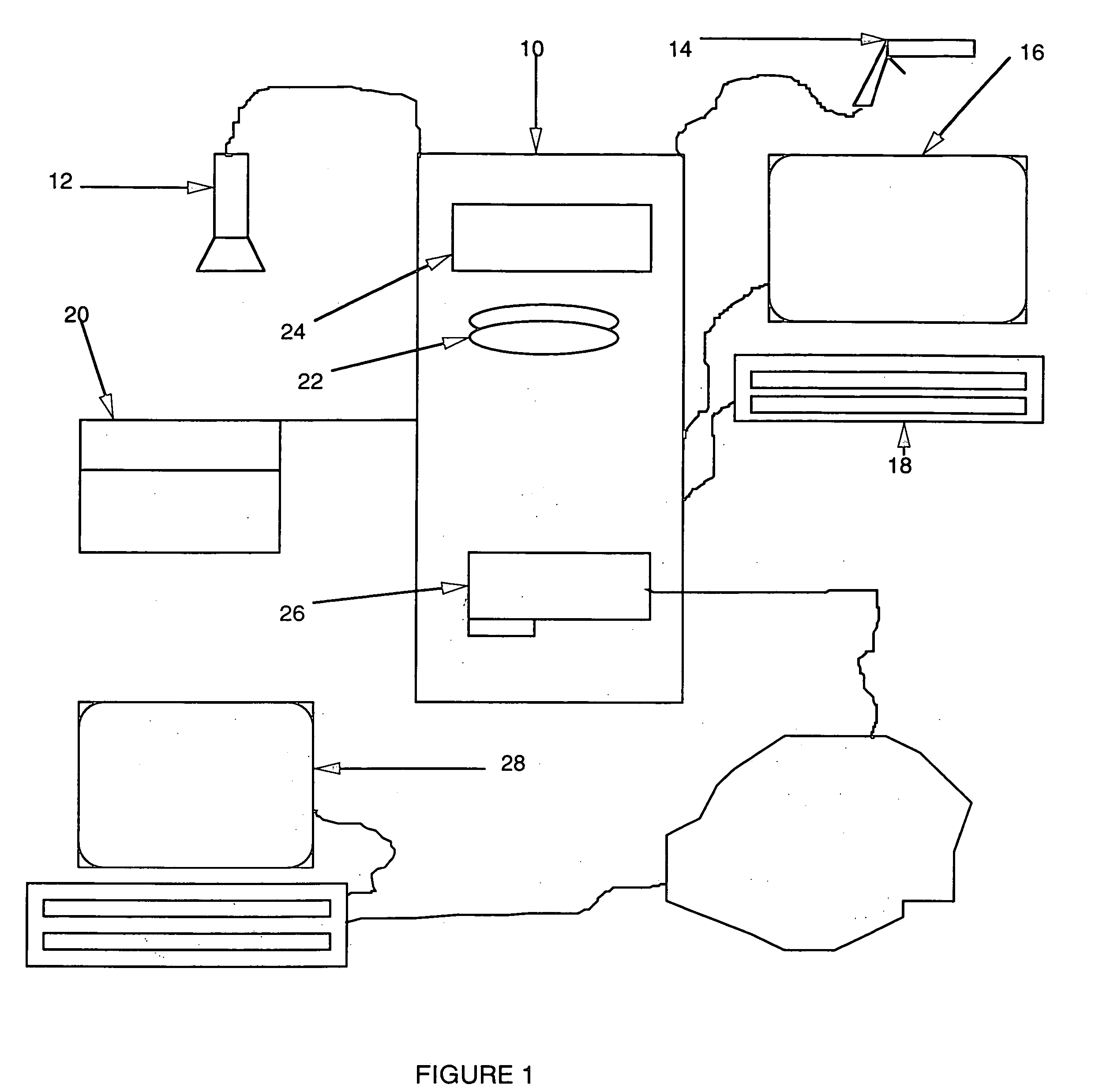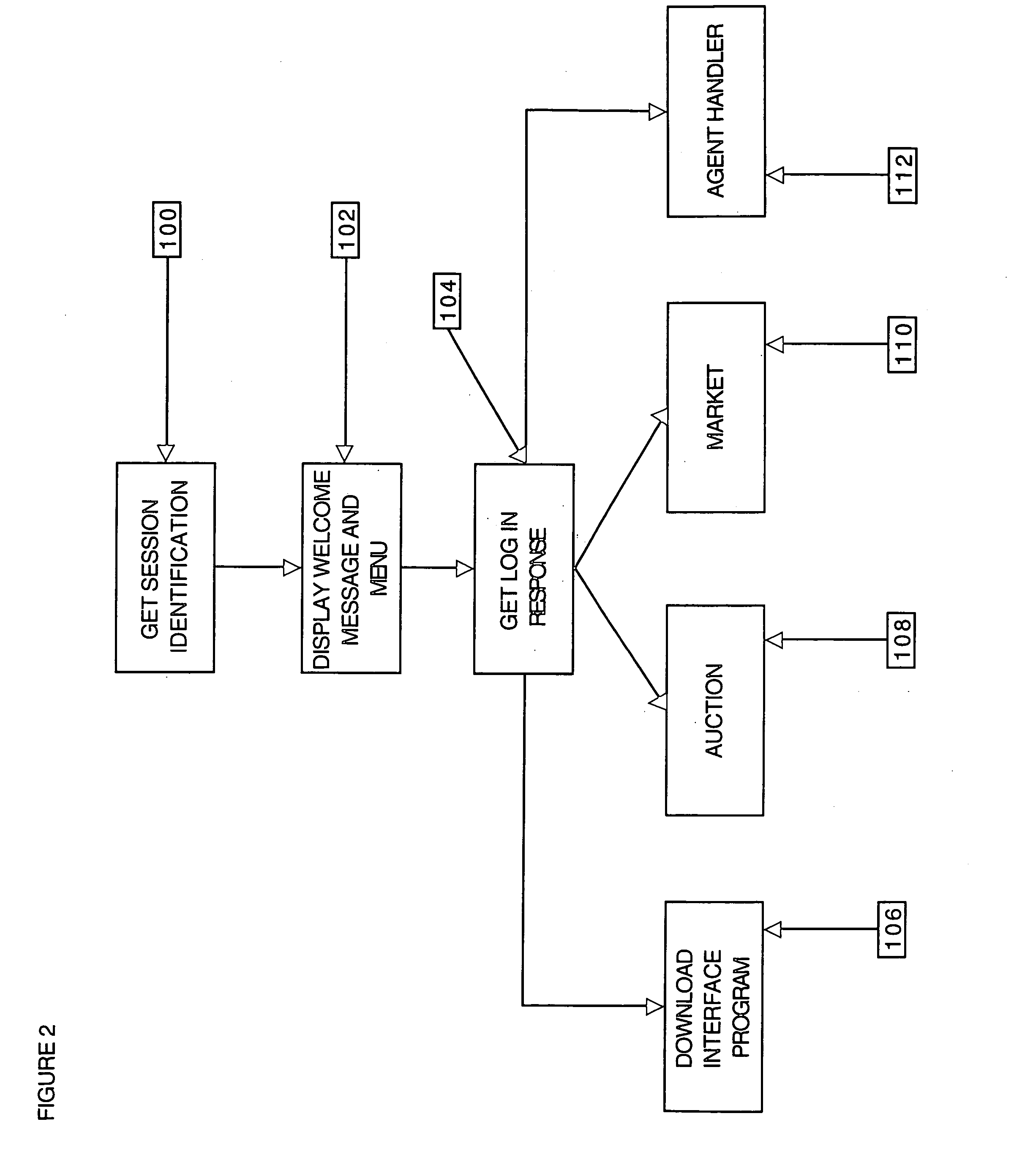[0011] The present invention is a network of consignment nodes. A consignment node is a
computer database of used goods preferably operated by a used good, collectable shop keeper or a bailee. All consignment nodes users or operators, hereinafter users, are “trusted” licensees or franchisers of the
software and hardware necessary to create and operate a consignment node. Thus, the network provides a trusted means for consignment node users, e.g. shop keepers, to establish
electronic markets for collectable goods, establish electronic auctions, establish a means for searching each others shops to locate hard to find collectibles items, and a means to electronically present goods to a market. The present invention will allow, or
license, certain consignments nodes to become a dominant market maker for a particular class of goods, for example, a consignment node
franchise may be given the rights to establish the dominant market for collectable antique pens. Other consignment nodes, after taking physical possession of a good, may make an electronic presentment of that good to such a dominant consignment node market. Thus, a local collector of antique pens may bring a pen to a convenient consignment node in
small town, USA, the consignment network would allow this collector to electronically “present” his pen to the dominant market make node for antique pens in for example, Chicago. Participants, e.g. customers and collectors (hereinafter “participants”), may reach a dominant node's market, or any other consignment nodes electronic store, from his or her home by
logging on from a PC located at the participant's home to their locally operated consignment node and reaching the distant consignment node through the network of consignment nodes. Thus, each consignment node user, e.g. shop keeper, has a potential participant, i.e. customer base, of all consignment node participants. In other words, a potentially huge customer base that incurs the minimal cost of a local consignment node connection may reach any other consignment node through the consignment node network. And local collector's may economically participate in the collectable markets by using local access to a convenient consignment node “trusted” bailee, and electronically presenting collectable goods to a dominant market.
[0014] The present invention may allow a participant to electronically purchase goods from a consignment node and to select whether the good should be shipped to a participant designed location or the participant may take electronic legal ownership of a good and post a new participant defined offer or reserve price. By the interaction of a plurality of participants buying and selling collectibles on a consignment node, posting “buy at” and “sell at” quantities and prices the consignment node may establish a market or become a “market maker” for collectable goods. A participant may also elect to electronically transfer or present a good to a different consignment node or market. This allows a participant to speculate with collectable goods on the consignment node network's different markets and not incur the shipping costs with physically moving the goods, while providing a trusted means to assure potential buyers of the good's bona fide availability.
[0016] The user fills out the display
record with information concerning the particular Babe Ruth card. The consignment node verifies that enough information has been filled out in the displayed computer
record, as well known to the
electronic database arts, and accepts the
record. It should be noted that the consignment node
database record has data fields for the consignment node user to add value to his consignment node postings with subjective information such as condition of the card, special features such as autographed by Babe Ruth, and the like. Thus, the consignment node user may build business goodwill into his particular consignment node operation by establishing his own particular subjectivity and quality standards in item postings.
[0030] The Agent Mode allows a consignment node participant to search a plurality of consignment nodes and purchase records for a used good. A participant may log onto his local consignment node to shop. This participant, for example, may be interested in
purchasing a particular used
coin for her collection. The participant may invoke a consignment node Agent to search the network of consignment nodes for this
coin. The participant fills in the search parameters for this
coin, for example, a 1872 U.S. penny from the Denver Mint. The consignment node Agent task handler verifies the Agent form is sufficiently filled out and accepts the task. The Agent checks a
list of other consignment nodes network addresses kept by the local consignment node
database and generates an Agent communication message to each consignment node on the
list and begins to establish communications to the other consignment nodes. An Agent message between consignment nodes begins by coordinating or reconciling the
database on each consignment node of the locations and / or address of other consignment nodes. If a consignment node has a different
list of consignment nodes in its database it will pass the node update information to the other consignment node. The consignment node originating the Agent task will generate a new Agent task to accommodate the information concerning the new consignment node. Once the consignment node database of consignment nodes is reconciled, the Agent will search the consignment node database for the goods requested. The Agent will report back whether the search of the local market database was successful and how many good that matches the Agent search request it found. An Agent may also search the consignment node database of past transactions to identify an owner of a particular good. The Agent may then report that John Doe of Main Street, U.S.A. was the last known purchaser of a 1872 U.S. penny from the Denver Mint at this node. It is understood that differing levels of privacy are available to consignment node purchasers, so as only allowing the local consignment node user to view past purchaser information and / or provide the Agent with an option of contacting that consignment user so he may contact the prior purchaser, thus, protecting privacy while allowing bona fide offers to reach the prior purchaser in confidence.
 Login to View More
Login to View More  Login to View More
Login to View More 


